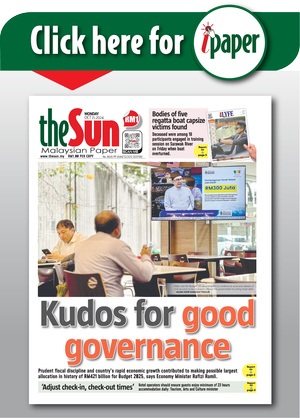PETALING JAYA: The Malaysian Meteorological Department (MET Malaysia) has confirmed that the haze, currently blanketing parts of the country, is largely due to transboundary smoke from central Sumatran forest fires, swept in by south-westerly winds during the ongoing Southwest Monsoon.
Running from June to September, this monsoon typically brings dry weather and scant rainfall – conditions that significantly elevate the risk of forest, peatland and bush fires both locally and in neighbouring nations, particularly Indonesia.
“Central Sumatran forest fires are the primary cause of the haze affecting several western Peninsular Malaysia states, including Selangor, Kuala Lumpur, Putrajaya, Negeri Sembilan and Malacca,” said MET Malaysia director-general Dr Mohd Hisham Mohd Anip.
Satellite imagery from the Asean Specialised Meteorological Centre (ASMC) on July 19 pinpointed 65 hotspots in Sumatra – down from the 79 seen the previous day – indicating ongoing fires are still fuelling cross-border air pollution.
“The haze is being carried into Malaysia by prevailing south-westerly winds,” explained Mohd Hisham, adding that no significant downpours or wind shifts are expected in the coming days, which could persist or worsen the situation.
Although not a direct cause, climate change is undeniably prolonging and intensifying the region’s dry spells.
“Global warming is leading to drier, more extreme seasons across Southeast Asia, increasing the frequency and severity of fires,” said Mohd Hisham.
He urged the public to exercise caution, especially between July and October, when haze episodes are most prevalent.
“Amidst these hot, dry conditions, stay hydrated and minimise outdoor activities, particularly during peak heat. If venturing out is unavoidable, take precautions like wearing a hat or use an umbrella,” he advised.
He said open burning should also be strictly avoided, as it exacerbates air quality and contributes to environmental degradation.
“Prolonged exposure to thick haze can lead to health issues,” Mohd Hisham warned.
Fortunately, MET Malaysia anticipates no strong El Nino this year, unlike the severe haze episodes that choked the region in 1998. This suggests that, barring a surge in uncontrolled fires, conditions are unlikely to deteriorate drastically.
To stay informed, Mohd Hisham encouraged the public to consult MET Malaysia’s website, the myCuaca mobile app, and their official social media channels.
He added that Malaysia continues to pursue regional cooperation through the 2002 Asean Agreement on Transboundary Haze Pollution.
“However, there remains no legal enforcement mechanism to enable countries to take firm action against those responsible for the haze, particularly from illegal forest burning.”









